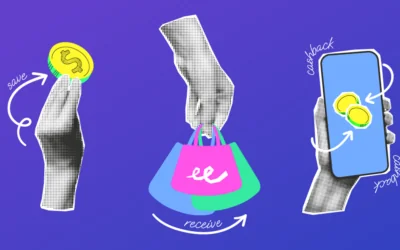1. Introduction
Latin America’s banking sector is undergoing a pivotal transformation. Despite a late start, the region is rapidly catching up, driven by a burgeoning ecosystem of over 1,166 fintech startups and heightened smartphone adoption, projected to reach 72% by 2020. Governments are fostering a conducive environment for digital financial services, aiming to level the playing field and enhance financial inclusion.
2. Latam Bank Challenges
Traditional banks in Latin America face significant hurdles in their digitization journey. The legacy IT infrastructure, organizational barriers, and high operational costs impede their ability to cater to lower-income customers effectively. Approximately 51% of the population remains unbanked, and the region grapples with one of the world’s highest banking fee structures. Additionally, the Covid-19 pandemic has underscored the urgent need for digital transformation, although it has also highlighted the challenges in swiftly implementing broad changes in IT infrastructure and organizational practices.
3. How Strands Can Help
Strands, leveraging its expertise in digital banking solutions, stands at the forefront of addressing these challenges. Through advanced analytics, artificial intelligence, and machine learning, Strands offers banks tools to optimize internal processes, enhance the customer experience, and lower operational costs. Our solutions focus on:
- Digitalizing customer interaction channels for improved accessibility and engagement.
- Streamlining backend operations to reduce costs and improve service delivery.
- Developing tailored financial products to address the needs of the underbanked and unbanked populations, thus driving financial inclusion.
Digitalizing Customer Interaction Channels for Improved Accessibility and Engagement
The rapid adoption of mobile technology in Latin America provides a fertile ground for digital banking solutions. Strands can leverage this trend by:
- Implementing Omnichannel Banking Solutions: Enabling customers to seamlessly interact with their banks across multiple digital platforms, including mobile apps, and chatbots, ensuring a consistent and personalized banking experience.
- Enhancing User Experience (UX): Designing intuitive and user-friendly interfaces that simplify banking processes, from account opening to loan applications, making it easier for customers, especially the tech-savvy and younger demographics, to navigate and engage with banking services.
- Utilizing Advanced Analytics for Personalized Services: Employing data analytics to gain insights into customer behavior, preferences, and financial needs, allowing banks to offer customized advice, products, and notifications, thereby increasing customer engagement and loyalty.
Streamlining Backend Operations to Reduce Costs and Improve Service Delivery
A significant challenge for Latin American banks is the high operational cost due to outdated IT infrastructure and manual processes. Strands can address these issues by:
- Automating Processes with AI and Machine Learning: Automating routine tasks such as customer verification (KYC processes), risk assessment, and compliance checks can drastically reduce manual labor, errors, and operational costs while speeding up service delivery.
- Adopting Cloud Computing: Encouraging banks to move their data and operations to the cloud to enhance scalability, flexibility, and cost-efficiency. Cloud-based solutions can reduce the need for expensive on-premise hardware and maintenance, allowing banks to pay only for the resources they use.
- Implementing API-First Banking Platforms: Using APIs to integrate with third-party services and fintech innovations, banks can rapidly deploy new services and features, improving their ability to respond to market demands and regulatory changes efficiently.
Developing Tailored Financial Products to Address the Needs of the Underbanked and Unbanked Populations, Thus Driving Financial Inclusion
Financial inclusion remains a pressing challenge in the region, with a significant portion of the population either underbanked or completely unbanked. Strands can play a crucial role in bridging this gap by:
- Creating Customized Microfinance Solutions: Developing products tailored to the financial realities of lower-income customers, such as microloans, micro-insurance, and savings plans, which require minimal paperwork and are easily accessible via mobile devices.
- Leveraging Alternative Data for Credit Scoring: Utilizing non-traditional data sources, such as utility bill payments, mobile phone usage, and transaction history from digital wallets, to assess the creditworthiness of individuals who lack a formal credit history. This approach can expand access to credit for millions of previously excluded individuals.
- Enhancing Financial Literacy and Inclusion: Offering educational tools and resources through digital channels to help customers understand and manage their finances better. Financial education is critical for building trust in banking services among the unbanked population and encouraging them to participate in the formal financial system.
4. Conclusion
The digital transformation of Latin America’s banking sector presents a unique opportunity for traditional banks to expand their customer base, improve efficiency, and foster financial inclusion. By embracing digital solutions and collaborating with fintech companies, banks can overcome existing challenges and position themselves for sustainable growth in the digital age. Strands, with its innovative solutions and deep industry expertise, is ideally positioned to assist banks in navigating this transformation, ensuring they remain competitive and relevant in an increasingly digital financial landscape.
Download One Pager
PRIVACY NOTICE
This form collects your basic personal information so that we can continue to send you relevant information and updates about the world of Fintech.
By giving your consent, you'll stay on our distribution list and more importantly, in the loop about the latest Strands news.



